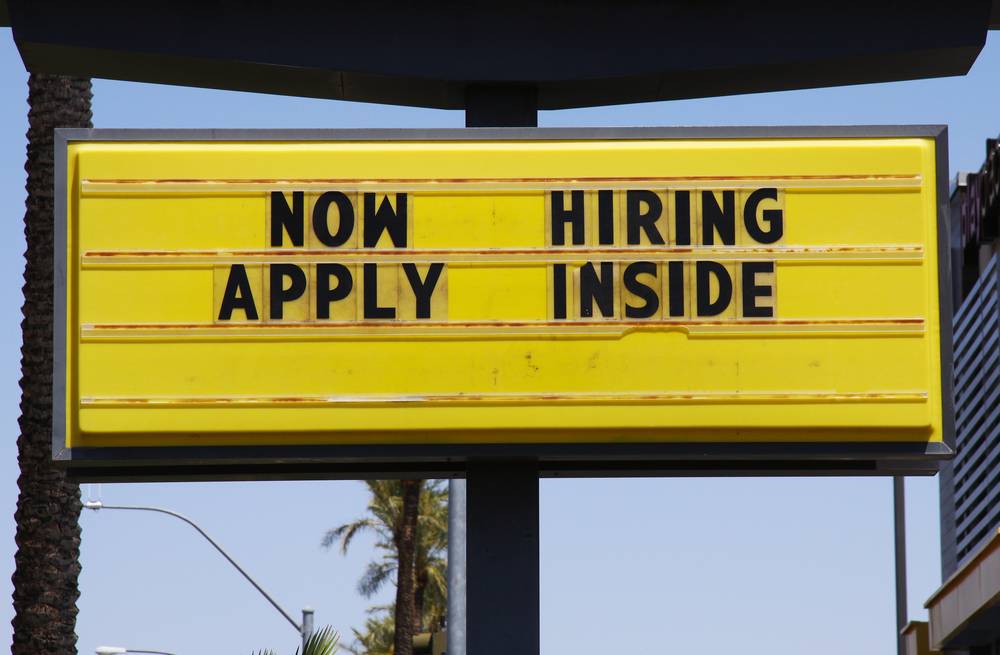Jobs
CT Achieves All-Time High for Private Sector Jobs, New Report

For the fifth consecutive month, Connecticut has gained jobs — this time, approximately 4,700, while the unemployment rate fell from 4.4% in April to 4.3%, according to the Department of Labor’s (CTDOL) May jobs report. This increase boosted the year-to-date total employment level to 15,200, which is only 3,200 shy of 2023’s number (18,400).
Meanwhile, in another positive trend for the state, private sector employment is at an all-time high with 1,476,100 payroll jobs; and April’s numbers were revised up from 1,100 to 1,600 jobs added.
The “solid month” report has stoked CTDOL Commissioner Danté Bartolomeo’s confidence that the state’s economic indicators are “continuing to move in the right direction.”
“Connecticut employers are adding jobs and employers and consumers are benefiting from an improving national condition including a lower inflation rate, more stability in consumer prices, and, while it’s been predicted month over month, no signs of recession,” Bartolomeo said in a press release. “The Connecticut economy appears to be following the new trend set after 2020 with strong early year growth that moderates at the end of the year.”
Conversely, when compared to Bartolomeo’s optimism, Americans’ confidence in the national economy continues to decline, according to Gallup; additionally, even though inflation has slowed, trends have not necessarily reversed — as the rate increased by 3.3% in May. (For context, this rate is lower than April by 0.1%, and far below the 9.1% peak in June 2022.) And Bankrate notes the “inflation crisis is far from over,” finding that consumer prices have risen 20.8% since the pandemic, with only 6% of the nearly 400 items the Bureau of Labor Statistics tracks cheaper today.
Still, a majority of Connecticut’s ten supersectors performed well last month with seasonally adjusted employment “play[ing] a large role in overall job gains in May,” according to CTDOL Director of Research Patrick Flaherty. Below is a breakdown:
| Industry Supersector | Difference in Jobs (Gains and/or Declines) |
| Leisure and Hospitality | +1,800 |
| Educational and Health Services | +1,600 |
| Professional and Business Services | +1,000 |
| Information | +600 |
| Government | +500 |
| Trade, Transportation & Utilities | +300 |
| Construction | 0 |
| Manufacturing | -500 |
| Other Services | -400 |
| Financial Activities | -200 |
Additionally, compared to May 2023, average weekly and hourly earnings across the supersectors have mostly experienced modest increases with Financial Activities seeing the largest year-to-year change ($229.67), while Manufacturing confronted a decrease by $4.31. Here is the breakdown:
| Average Weekly Earnings | Average Weekly Hours | Average Hourly Earnings | ||||
| Industry | May-24 | May-23 | May-24 | May-23 | May-24 | May-23 |
| Construction | $1,538.64 | $1,535.45 | 37.4 | 39.3 | $41.14 | $39.07 |
| Manufacturing | $1,438.52 | $1,442.83 | 38.9 | 39.4 | $36.98 | $36.62 |
| Trade, Transportation & Utilities | $968.95 | $897.37 | 31.8 | 31.3 | $30.47 | $28.67 |
| Financial Activities | $2,205.62 | $1,975.95 | 37.6 | 37.1 | $58.66 | $53.26 |
| Prof. & Business Services | $1,592.64 | $1,500.96 | 36 | 35.3 | $44.24 | $42.52 |
| Education & Health Services | $1,137.09 | $1,090.64 | 32.6 | 32.9 | $34.88 | $33.15 |
| Leisure & Hospitality | $609.14 | $551.04 | 25.8 | 24.6 | $23.61 | $22.40 |
| Other Services | $921.42 | $892.38 | 30.4 | 29.5 | $30.31 | $30.25 |
The CTDOL May report also found that the state’s labor force slightly increased from 64.6% to 64.7%, and that Connecticut had 90,000 jobs available in April.
Despite mostly positive news, there is still room for improvement in Connecticut’s tax and regulatory policies to attract not only new businesses, but reduce outmigration. WalletHub ranked the Constitution State 49th in its “Best & Worst States to Start a Business (2024),” and the Tax Foundation placed Connecticut 47th for the tenth consecutive year in its annual “State Business Tax Climate Index.” To make matters worse, initial reports that revealed Connecticut reversing outmigration trends are “just not true,” according to CT Insider’s Dan Haar, who found that U.S. Census data indicated a net exit of 9,016 people to other states in the year ending July 1, 2023.
In short, Connecticut employers are showing resolve despite regulatory and costly barriers on a macro- and micro-level. Imagine if those were removed or eased, how much better our employers and employees could perform? That is an enticing and achievable prospect. Lawmakers should take heed.







:max_bytes(150000):strip_icc()/roundup-writereditor-loved-deals-tout-f5de51f85de145b2b1eb99cdb7b6cb84.jpg)


